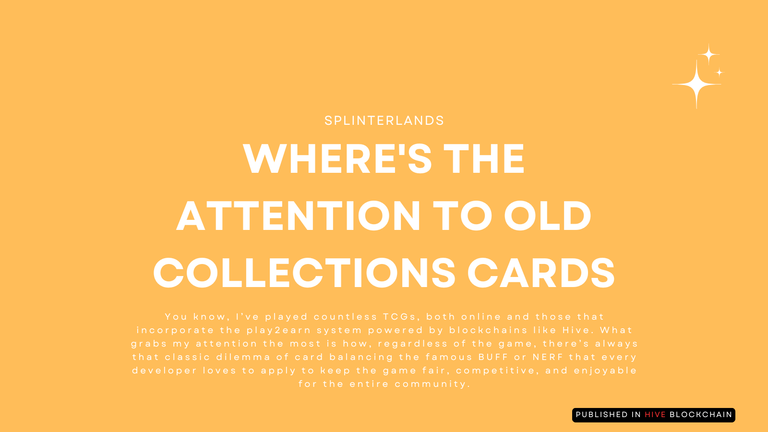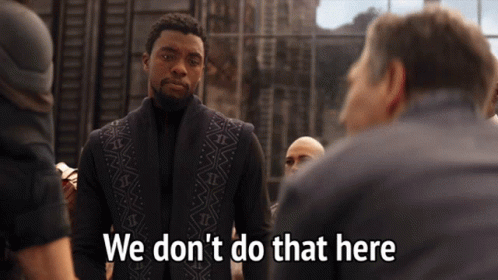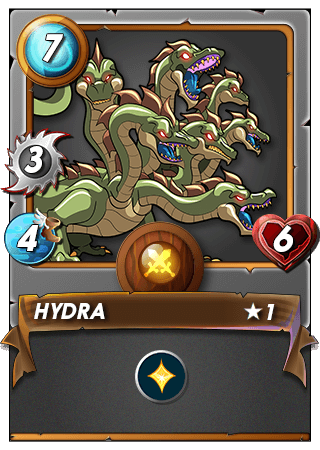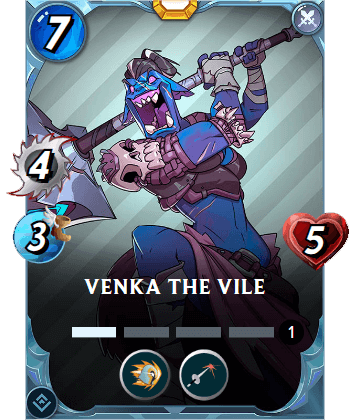
📝 English Version
You know, I’ve played countless TCGs, both online and those that incorporate the play2earn system powered by blockchains like Hive. What grabs my attention the most is how, regardless of the game, there’s always that classic dilemma of card balancing the famous BUFF or NERF that every developer loves to apply to keep the game fair, competitive, and enjoyable for the entire community.

This doesn’t happen in Splinterlands, of course.
Let’s talk about Splinterlands, one of my blockchain-powered favorites. I won’t lie, while it’s one of my favorites on the Hive network, Gods Unchained has truly captured my heart. But back to Splinterlands what really intrigues me is how they handle card adjustments. It’s the story of tweaking old cards so they don’t become obsolete or nerfing new ones that may disrupt the game when paired with others.
This dynamic makes me think about how it directly impacts the community and, of course, the players’ wallets.
I could probably point out older collections like ALPHA and BETA, where you rarely see them in battles against other players at least in leagues ranging from Gold to Champion.


How about a comparison between HYDRA and VENKA THE VILE? Both cost 7 mana.
Hydra, a creature with these attributes, initially has only the Heal ability. Over time, it can gain new skills like Thorns, Retaliate, and finally Trample.
Of course, its current price is low, at just under $10 on PeakMonsters.
On the other hand, we have a card from the new Rebellion collection, Venka the Vile, with slightly similar attributes, swapping 1 health point for attack power. However, it comes with better starting abilities such as Charge and Piercing, and can be upgraded to gain Oppress and Trample. These newer abilities have a stronger impact compared to Hydra’s, clearly.
Still, not every rework is perfect, in my opinion.
One example that excites me is the summoner YODIN ZAKU in Splinterlands.
This combination is simply brilliant for a Fire Deck with creatures that use ranged attacks, opening up new strategic possibilities. It’s this kind of innovation that makes me love these games even more. Seeing how a simple adjustment or the introduction of a new card can completely transform the game’s dynamics is fascinating.

Now, speaking of financial impact, it’s inevitable. When a blockchain-based game like Splinterlands makes significant card adjustments, it can influence the value of older collections. Sometimes, this may discourage new players from investing in those collections, fearing their cards might lose value. However, I believe there are ways to work around this. Smart developers always look for mechanisms to reward players who invested early in older collections, whether through exclusive benefits or special events.
The community plays a crucial role in this balancing act.
Constant feedback from players helps developers understand what’s working and what needs to be adjusted. This might be something Splinterlands could focus on more in the future.

Here to sign up.If you’re not part of the #Play2Earn Splinterlands game yet, consider registering using my referral link by clicking

About the Author
A Web3 Gaming enthusiast who dedicates some of his time to Play-to-Earn games and the ecosystem they integrate. A weekly author, sharing diverse posts on this topic through the Hive Blockchain. If you’re not part of this yet, consider registering through my Referral Link to follow all my content shared here.

📝 Versão em Português
Sabe, já participei em uma infinidade desses jogos TCG, tanto online quanto aqueles que incorporam o sistema play2earn, alimentados por blockchain como Hive. E o que mais me chama atenção é como, independente do jogo, há sempre aquele dilema clássico de balanceamento das cartas, o famoso UP ou NERF que todo desenvolvedor adora aplicar para manter o jogo justo e competitivo e agradável para toda a comunidade.

Isso não acontece em Splinterlands é claro.
Vamos falar de Splinterlands, um dos meus favoritos que utiliza blockchain. Não vou mentir, embora seja uns dos meus favoritos na rede Hive, Gods Unchained é o meu favorito é claro. Mas, voltando ao Splinterlands, o que realmente me intriga é como eles lidam com as alterações nas cartas. É aquela história de ajustar o poder das cartas antigas para que elas não fiquem obsoletas ou, inversamente, nerfar as novas cartas que podem desequilibrar o jogo quando combinadas com outras.
Isso me faz pensar em como essa dinâmica afeta diretamente a comunidade e, claro, o bolso dos jogadores.
Eu poderia citar talvez coleções mais antigas como ALFTA e BETA, onde talvez você raramente os veja em batalhas de outros jogadores, isso é, estou circulando opiniões de ligas Ouro a Campeões.


Que tal uma comparação entre HYDRA e VENKA THE VILE? Onde ambos tem o custo de 7 de mana.
Hydra, uma criatura com esses atributos, de ínicio apenas a habilidade Heal, enquanto que pode obter novas habilidades após sua atualização como Thorns, Retaliate e em último Trample.
É claro, seu custo agora no momento é baixo, pouco menos de 10$ dólares em PeakMonsters.
Em contrapartida, temos um da nova coleção Rebellion Venka the Vile, que mantém atributos um poucos semelhantes, trocando 1 ponto de vida por ataque. Entretanto ele tem habilidades de inicio bem melhores que o anterior. Nesse caso Charge, Piercing, enquanto pode ser melhorado para obter Opress e Trample. São habilidades mais recentes que tem um melhor impacto que as habilidades da Hydra é claro.
Entretanto nem toda reformulação é precisa eu acho.
Um exemplo que me anima bastante é o invocador YODIN ZAKU em Splinterlands.
Essa combinação é simplesmente brilhante para adicionar ao Deck de Fogo e com criaturas com ataque a distancia, abrindo novas possibilidades estratégicas. É esse tipo de inovação que me faz amar ainda mais esses jogos. Ver como uma simples alteração ou introdução de uma nova carta pode transformar completamente a dinâmica do jogo é fascinante.

Agora, falando sobre o impacto financeiro, é inevitável. Quando um jogo baseado em blockchain como Splinterlands faz ajustes significativos nas cartas, isso pode influenciar o valor das coleções antigas. Às vezes, isso pode desencorajar novos jogadores a investir nessas coleções, temendo que suas cartas percam valor. Mas, acredito que há maneiras de contornar isso é claro, desenvolvedores inteligentes sempre buscam criar mecanismos que recompensem os jogadores que apostaram cedo nas coleções antigas, seja através de benefícios exclusivos ou de eventos especiais.
A comunidade desempenha um papel crucial nesse equilíbrio.
Feedback constante dos jogadores ajuda os desenvolvedores a entender o que está funcionando e o que precisa ser ajustado, é isso que talvez o Splinterlands precise futuramente.

Aqui para ser redirecionado para o registro.Se você ainda não participa do jogo #Play2Earn Splinterlands, considere se registrar através do meu link de referência, basta clicar

Sobre o Autor
Apreciador de Web3 Gaming. Entusiasta e dedica um pouco do seu tempo a jogos no estilo Play-to-Earn e pelo ecossistema que eles integram. Autor semanal publicando diversas postagens referente a isso através da Hive Blockchain. Se você ainda não faz parte disso, considere se registrar através do meu Link de Referencia para acompanhar todo meu conteúdo compartilhado aqui.

Obrigado por promover a comunidade Hive-BR em suas postagens.
Vamos seguir fortalecendo a Hive
Delegate your HP to the hive-br.voter account and earn Hive daily!
🔹 Follow our Curation Trail and don't miss voting! 🔹
Your post was manually curated by @shiftrox.